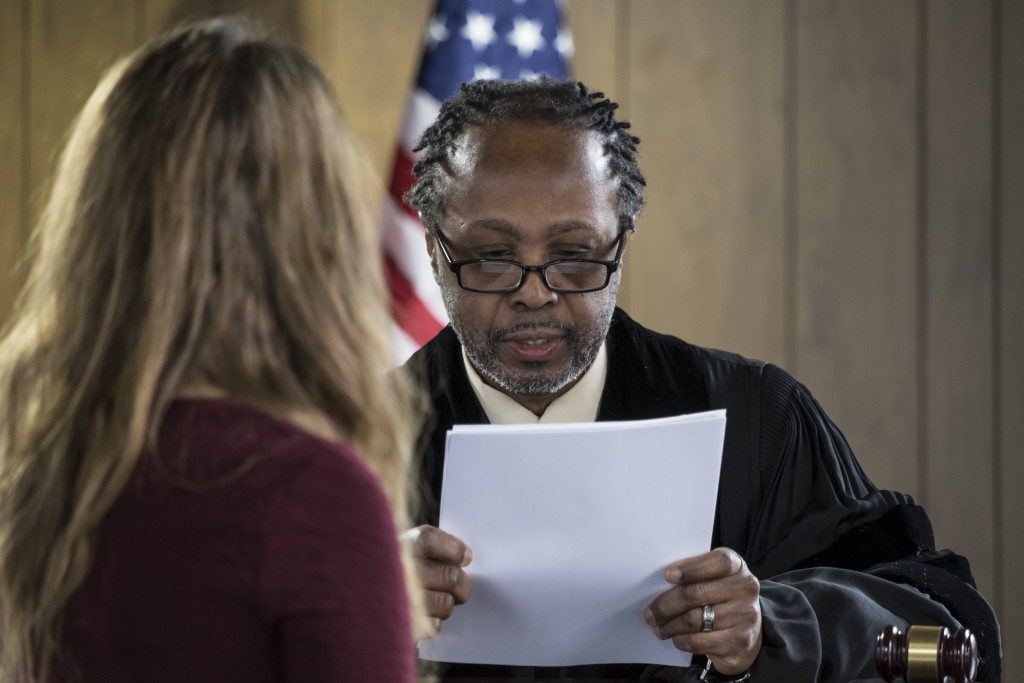The justice system is in the business of seeking the truth. It determines who’s at fault, to what degree and what penalties must be applied. In doing so, it follows a set of rules and uses multiple elements to weigh the facts submitted and make a decision. Those decisions come in the form of a verdict.
What is a Verdict in Law?
A verdict is a finding or a formal decision determined by a jury after the prosecution and the defense have presented their case. It’s generally handed by a jury, but in some cases, a judge may intervene.
Once the jury reaches a decision, they inform the bailiff. The bailiff then informs the judge that the jury reached a verdict.
The type of verdict will depend on the nature of the case.
- For criminal cases, a jury trial may yield a guilt or not guilty verdict.
- For civil cases, jurors may find in favor of the plaintiff or the defendant.
The verdict, in general, must be unanimous. A unanimous guilty verdict is necessary for major criminal cases, like capital murder. In minor crimes, some states may allow a majority vote over a unified vote. A jury that may vote 10 for guilty and two for not guilty will mean a guilty verdict for the defendant.
Polling the Jury After a Guilty or Not Guilty Verdict

Some defense and prosecuting attorneys may also request the court to poll the jurors. A judge asks each juror is then asked what their vote was during the deliberations.
Lawyers will request a poll to determine whether the decision is a unanimous verdict. When a poll is being done, a juror may still be able to change their mind. Maybe one juror felt pressured during deliberations or the person may have been a victim of jury tampering. Whatever the reason behind the change in decision, the justice system gives the prosecution and defense a chance to ensure the credibility of the process.
A verdict isn’t final until the court puts it on record, so a judge must allow for time for every juror to be polled.
The polling process also provides either side a way to appeal the conviction. When a judge may have overlooked the appropriate process, from denying the polling outright to doing nothing soon after a juror or two reveal they’ve changed their decision.
When the court determines the verdict isn’t unanimous anymore, the judge will instruct the jury to deliberate further.
What Happens if a Unanimous Guilty Verdict Isn’t Reached?

If a jury can’t agree on a verdict after deliberating a few times, then it’s a hung jury or jurors are deadlocked. A judge has the authority to ask the jury to deliberate again once or twice; this is also called the Allen charge, named after a case that the Supreme Court ruled.
Although the judge can instruct jurors to go back and discuss the case again, they can’t be persuaded to change their minds. If jurors are hopelessly deadlocked, with some sticking to their chosen verdict, the judge will declare a mistrial.
In civil or criminal law, a mistrial means that the defendant may be retried. The double jeopardy, for criminal cases, does not apply with a mistrial since there was no conviction. This is assuming the prosecution finds new evidence or new avenues to have the matter submitted again in court.
In some cases, the jury’s verdict may be set aside — even if it were unanimous.
The Many Other Findings in a Jury Trial

Some juries tend to focus on the emotional aspect of a trial, criminal or civil. You take away the suits, the formality of the process and every other element of the trial, and you’re left with the human element. Jurors may empathize with the defense or the prosecution, and it may lead to jury nullification.
Jury nullification happens when juries decide without following the letter of the law; that they’ve reached a guilty verdict even when the prosecution case is weak or a not guilty verdict even when the evidence is overwhelming.
The judge can’t penalize the jurors for “ignoring the law.” But they can intervene in the interest of justice through a number of ways:
Directed Verdict
A judge may enter a ruling after determining that the jury’s verdict has no legal basis. The defense or the prosecution may make a motion for a directed verdict.
Judgment as a Matter of Law (JMOL)
JMOL applies to federal civil and criminal law and replaces directed verdict.
Judgment Notwithstanding the Verdict (JNOV)
The JNOV is applied in civil trials wherein the losing party motions. Similar to directed verdict, the JNOV sets aside the jury’s decision because the law may have been applied incorrectly or that there is no legal basis for the decision.
Arrest of Judgment
A motions for an arrest of judgment means that the court may not have the jurisdiction of the charged offense. It may also mean that information in the indictment may not be sufficient. The motion is filed soon after the jury reached a verdict.
What is the Difference Between Verdict and Judgment?
In a jury trial, the judge must sign off on the verdict. If the judge announced another decision or that their decision runs counter to the jury’s decision, then that will be entered into the court’s record.
The difference between a verdict and a judgment is the source of the decision. Whereas the verdict comes from the jury, the judgment comes from the judge. In either scenario, a trial is the common denominator.
Once a decision has been determined and the judge deems it in keeping with the letter of the law, a declaration of case disposed or case dismissed will take place. That declaration means the conclusion of the trial.
If all goes well and every procedure has been followed honestly, everyone will have had their day in court. The prosecution will have made its case and the defense will have had its arguments heard.







